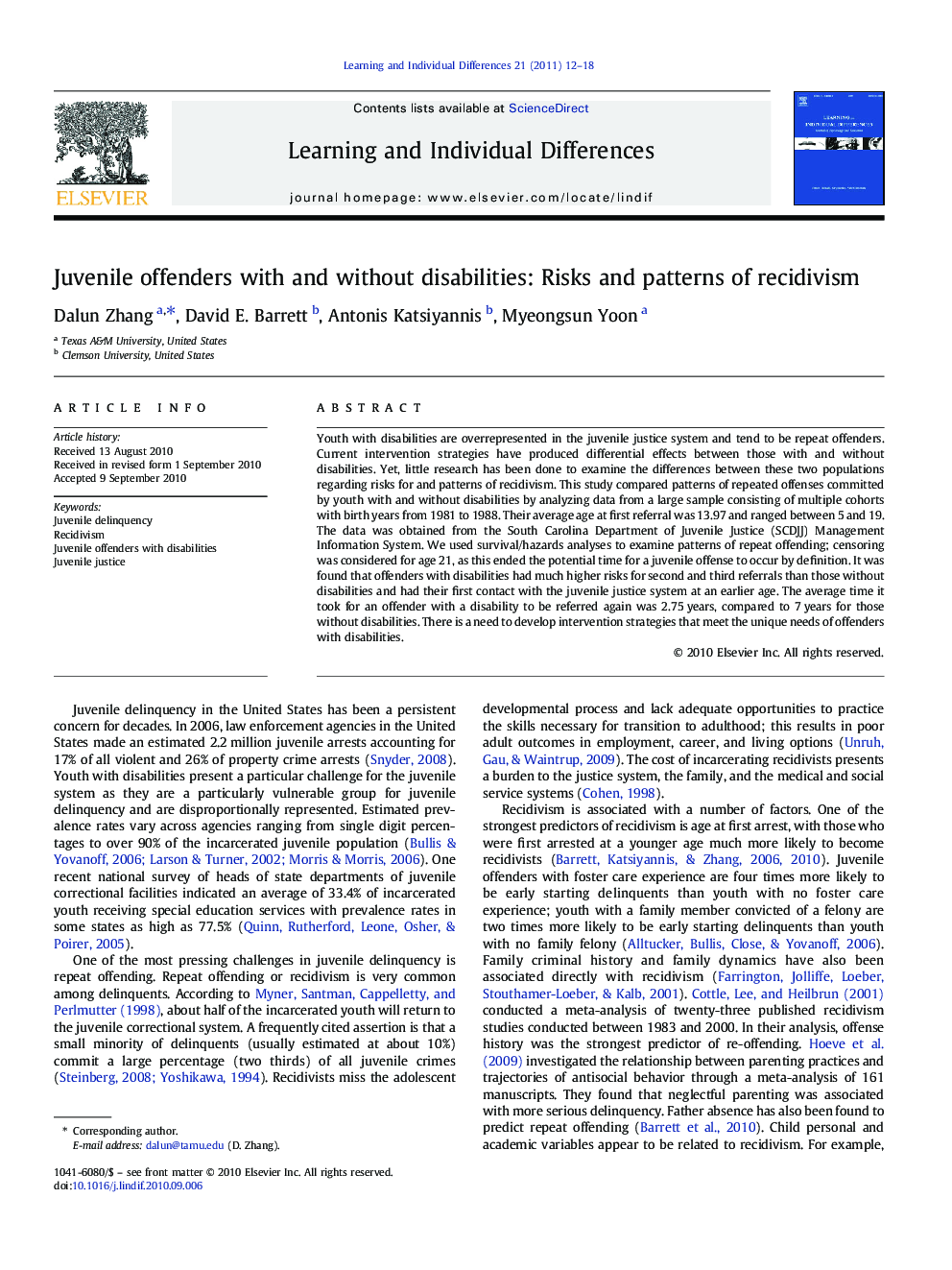| کد مقاله | کد نشریه | سال انتشار | مقاله انگلیسی | نسخه تمام متن |
|---|---|---|---|---|
| 365025 | 621104 | 2011 | 7 صفحه PDF | دانلود رایگان |

Youth with disabilities are overrepresented in the juvenile justice system and tend to be repeat offenders. Current intervention strategies have produced differential effects between those with and without disabilities. Yet, little research has been done to examine the differences between these two populations regarding risks for and patterns of recidivism. This study compared patterns of repeated offenses committed by youth with and without disabilities by analyzing data from a large sample consisting of multiple cohorts with birth years from 1981 to 1988. Their average age at first referral was 13.97 and ranged between 5 and 19. The data was obtained from the South Carolina Department of Juvenile Justice (SCDJJ) Management Information System. We used survival/hazards analyses to examine patterns of repeat offending; censoring was considered for age 21, as this ended the potential time for a juvenile offense to occur by definition. It was found that offenders with disabilities had much higher risks for second and third referrals than those without disabilities and had their first contact with the juvenile justice system at an earlier age. The average time it took for an offender with a disability to be referred again was 2.75 years, compared to 7 years for those without disabilities. There is a need to develop intervention strategies that meet the unique needs of offenders with disabilities.
Research Highlights
► This study compared patterns of repeated offenses by youth with and without disabilities.
► Offenders with disabilities had much higher risks for second and third referrals.
► It took offenders with disabilities shorter time to be referred for a second offense.
► Intervention strategies need to meet the unique needs of offenders with disabilities.
Journal: Learning and Individual Differences - Volume 21, Issue 1, February 2011, Pages 12–18